Phil Hughes: Injury a reminder of cricket's dangers - Agnew
- Published
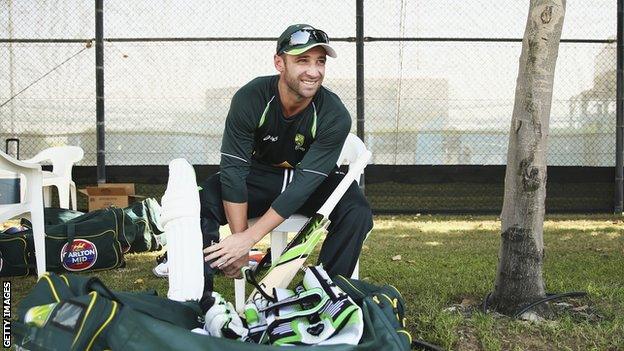
Hughes has played 26 Tests and 25 one-dayers for Australia
The shocking injury suffered by Phil Hughes on Tuesday is a stark reminder of the dangers faced by cricketers when the ball is coming at them at speeds of up to 90mph.
Anyone who has played the game at any level will be hoping and praying that the Australia batsman comes through this.
Thankfully, since the introduction of helmets 35 years ago these incidents really are very rare.
Protective headgear has prevented injuries to cricketers of all ages and all abilities and will continue to do so.
There are also limits on the number of short-pitched deliveries per over and rules that give the umpire the power to intervene if he feels a bowler is overstepping the mark in an effort to intimidate the batsman.
Cricket, however, is a sport, and there are very few sports that don't carry any element of risk.
A bouncer is a legitimate delivery and remains a crucial part of a bowler's armoury. Removing it entirely would be like asking a boxer not to use the jab.

The media are awaiting news from inside St Vincent's hospital where Hughes has had surgery and remains critical
Sports have to carry an edge, and the best you can do is to eliminate risks as far as you can.
One aspect that sometimes gets overlooked is the impact an incident like this can have on the bowler. One minute you are doing your best to be a big macho quick and the next you have a guy unconscious on the floor.
During a 1975 Test match, New Zealander Ewen Chatfield swallowed his tongue and stopped breathing after being hit on the temple by English fast bowler Peter Lever.
Chatfield's life was saved on the pitch by England physio Bernard Thomas, but I remember how utterly heartbroken Peter was at what had happened.
ICC match referee Ranjan Madugalle still carries a scar on his lip from where I hit him during an England A tour match in Sri Lanka in 1985.
At the time, I was absolutely devastated, but in reality I was only doing my job.
Nowadays, with so much more cricket being played around the world, instances of batsmen being hit on the head are more frequent. But whether or not that results in injury is largely down to luck.
Hughes was desperately unfortunate that the delivery from Sean Abbott hit him on the lower back of the skull, one of the few areas that is not protected by a helmet.
Now, we can only hope that fortune is on his side.
MCC laws on dangerous and unfair bowling |
|---|
(i) The bowling of fast short pitched balls is dangerous and unfair if the bowler's end umpire considers that by their repetition and taking into account their length, height and direction they are likely to inflict physical injury on the striker irrespective of the protective equipment he may be wearing. The relative skill of the striker shall be taken into consideration. |
(ii) Any delivery which, after pitching, passes or would have passed over head height of the striker standing upright at the popping crease, although not threatening physical injury, shall be included with bowling under (i) above, both when the umpire is considering whether the bowling of fast short pitched balls has become dangerous and unfair and after he has so decided. The umpire shall call and signal no ball for each such delivery. |
Jonathan Agnew was speaking to BBC Sport's Sam Sheringham
- Published26 November 2014
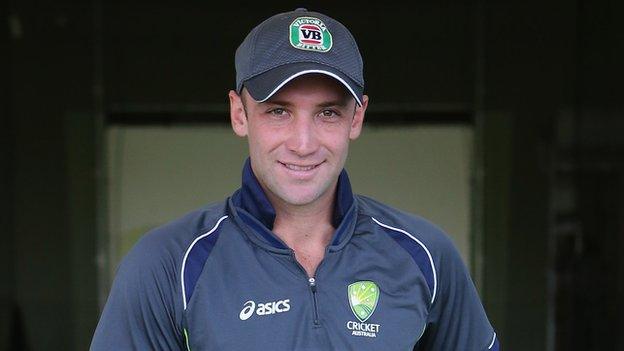
- Published25 November 2014
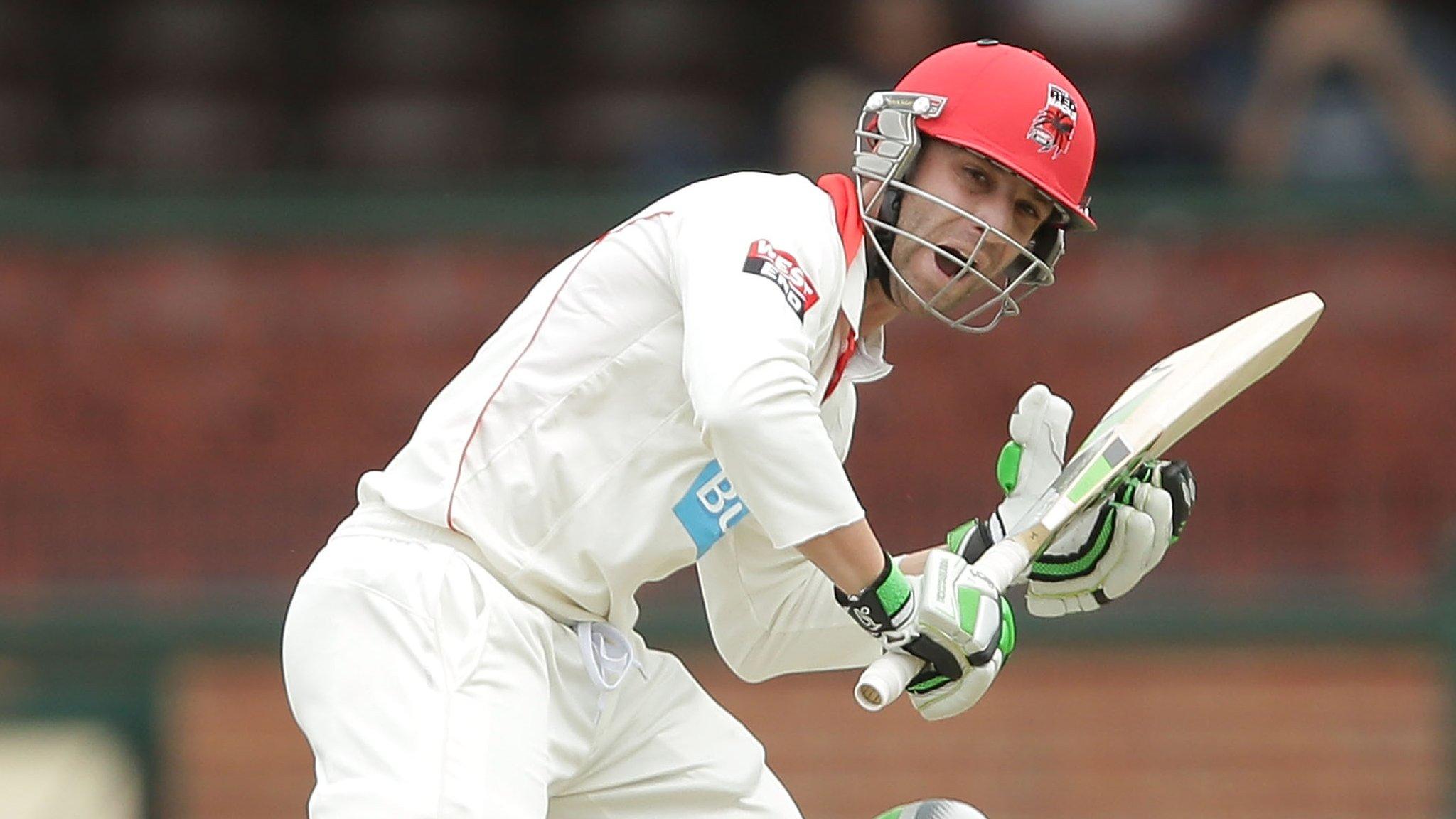
- Published25 November 2014
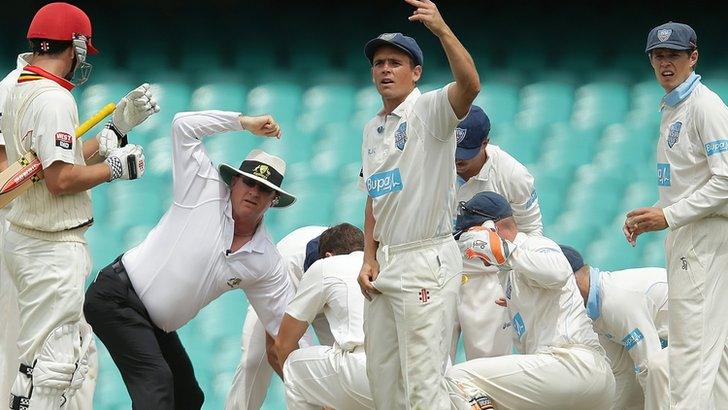
- Published25 November 2014
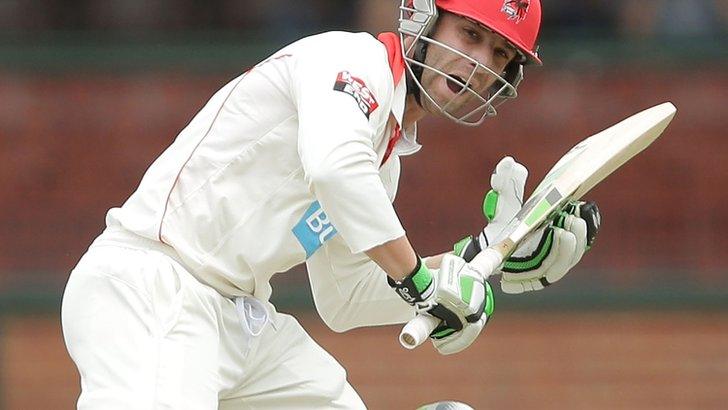
- Published25 November 2014
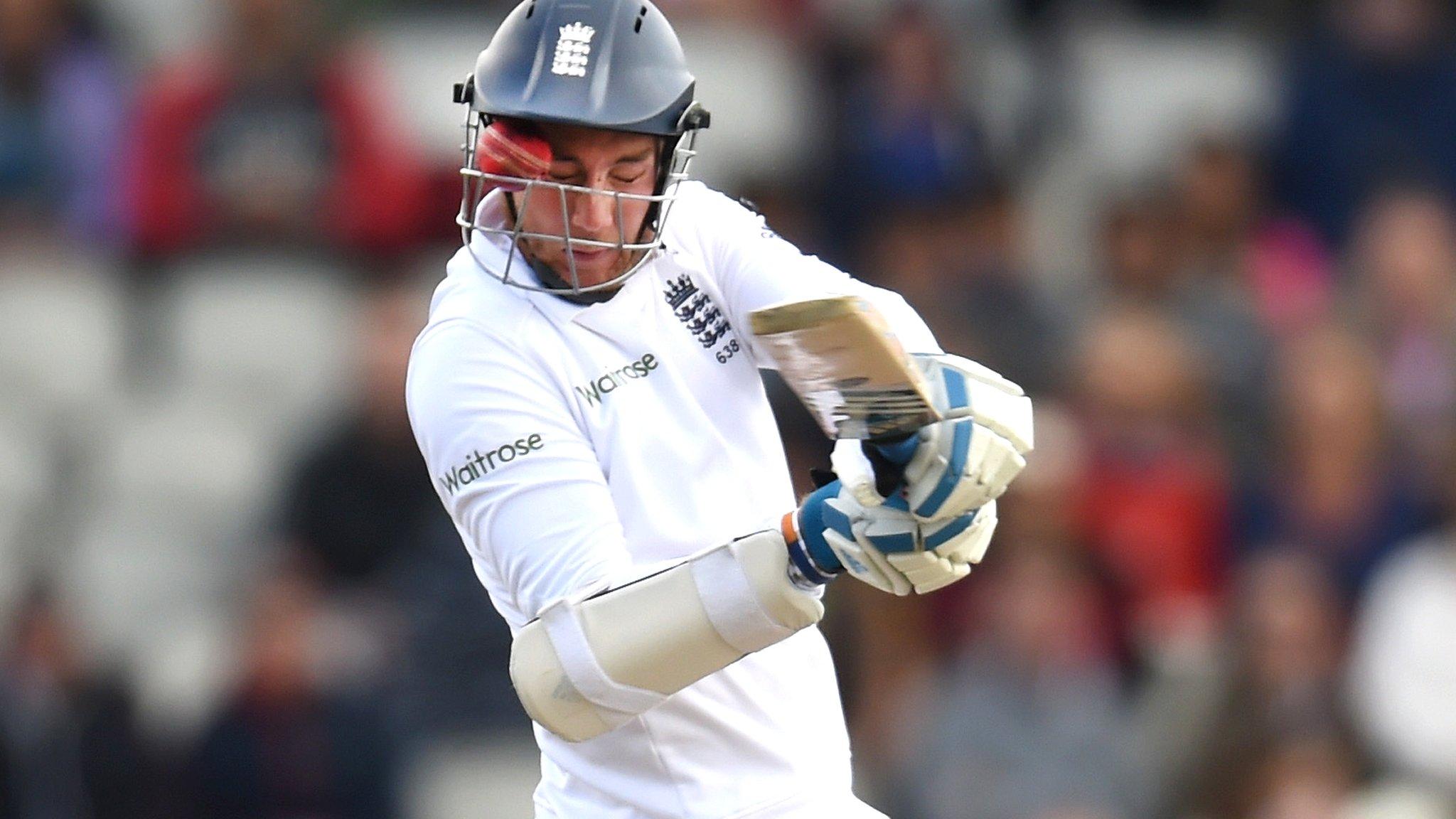
- Published25 November 2014
- Published15 May 2018
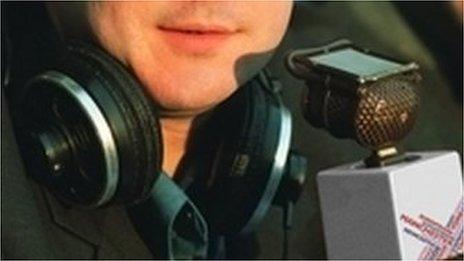
- Published18 October 2019
